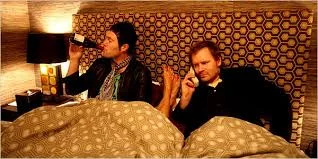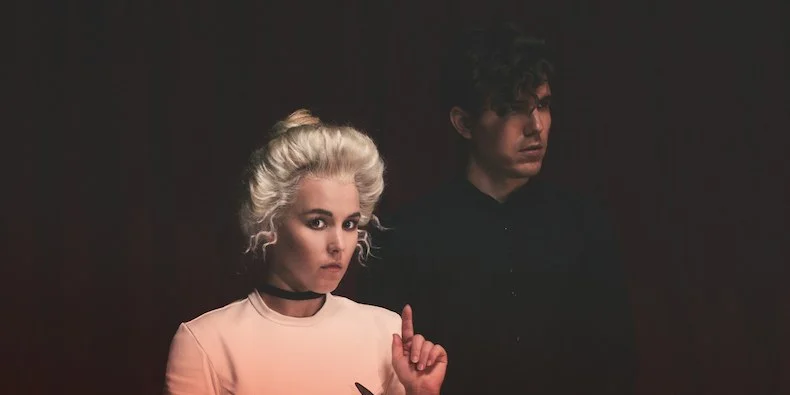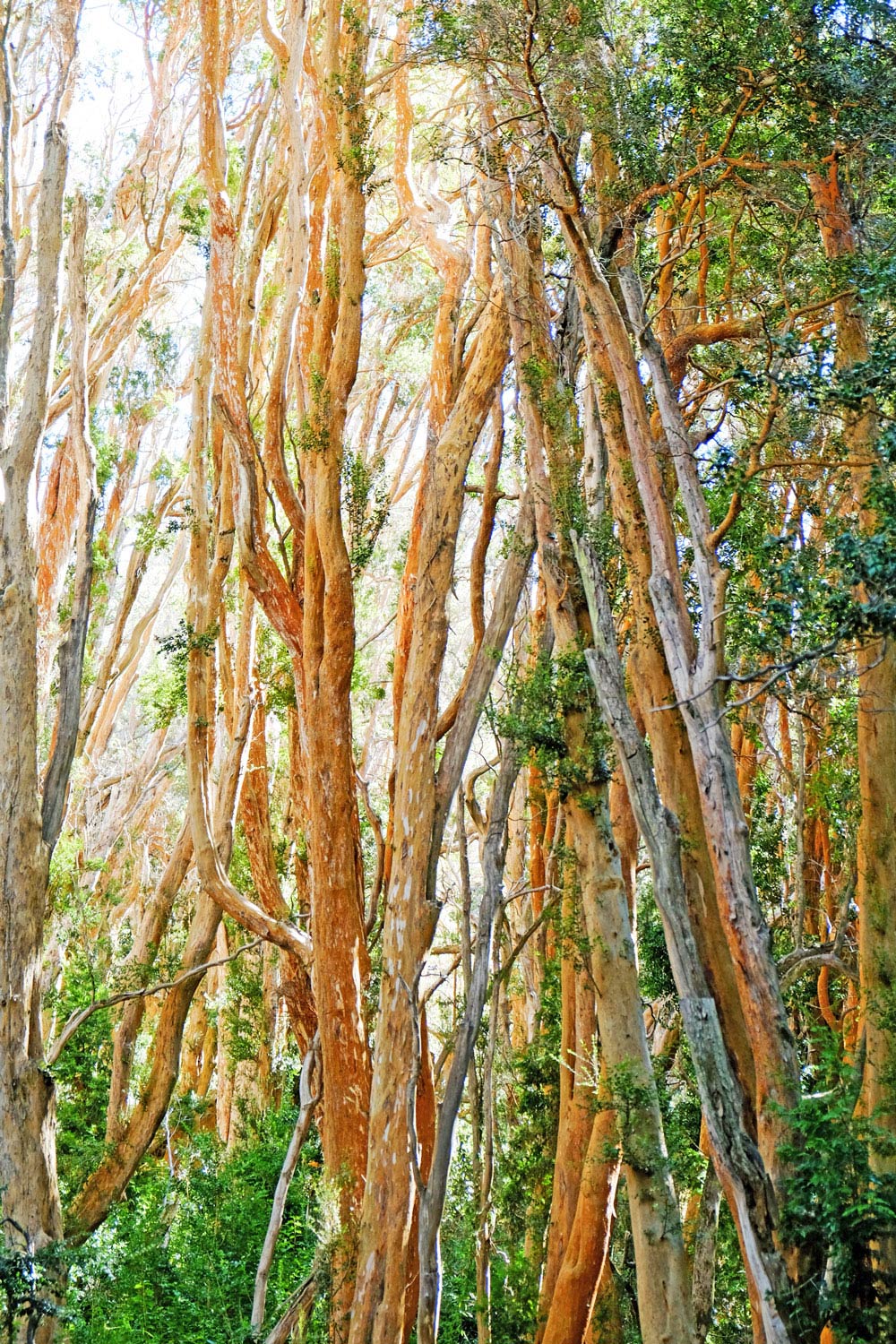Freddie Gibbs & Madlib - "Harold's"
Yumi Zouma - "Riquelme" (Live on PressureDrop.tv)
Ariel Pink - "Dayzed Inn Daydreams"
King Krule - "Czech One"
Todd Terje - "Inspector Norse"
XTC - "Making Plans For Nigel"
Grimes - "REALiTi"
Shout out to Elon and Claire.
Grand National - "Drink To Moving On"
Planningtorock - "The Breaks"
Miike Snow - "Paddling Out"
Cheap, Classic Film Cameras and Their Experimental Appeal
If you dig the retro, grainy, saturated look of the hipstamatic photo app for smart phones, you may be interested in the world of inexpensive, plastic medium-format film lo-fi cameras like the Holga or Diana F+. As well, photographers who want to loosen up creatively, or experiment with film might enjoy working with these lightweight, basic cameras. I obtained a Diana F+, and have enjoyed shooting some rolls of Kodak Portra 120 film around Portland, Maine.
Here's a brief run-down of some available toy cameras, and the emergence of lomography as a community and aesthetic.
LOMO & Lomography
LOMO LC-A shot by unknown LOMO enthusiast.
As I understand it, the LOMO LC-A started it all, and brought it all back. It's a Russian camera that some Austrians revived in the early nineties. They formed the Lomographic Society International, known broadly as Lomography. In their own words:
"Lomography is a globally-active organization dedicated to analogue, experimental and creative photography. With millions of followers and friends across the world, the concept of Lomography encompasses an interactive, vivid and sometimes even blurred and crazy way of life. Through our constantly expanding collection of innovative cameras, instant products, films, lenses & photographic accessories, we promote photography as an inventive approach to communicate, absorb and capture the world."
Holga
A Holga shot by Marky Ramone Go.
The Holga is the first toy camera I ever heard of. Despite sounding like a Scandinavian creation, the Holga was from China. Created by Lee Ting-mo in Hong Kong in 1981, it is largely responsible for the global swell of toy camera enthusiasts. The factory closed in 2015, and that is that. Luckily there are thousands to be found for sale, after its boom in the 2000s.
Diana
The Diana was also created in China, during the 1960s, and is now known as the Diana F+. Dianas are a little more pricey than Holgas, but they are lighter and smaller.
I own a Diana, and am very pleased with the balance it offers. Its photos have the lo-fi, bright appeal, but are often crisp and rich. The focus and colors are a little more accurate than with the Holga, but the corners are vignetted in the same manner.
It's a system camera that came with a flash, but I haven't used it. As with other toy cameras, it's all too easy to experiment with double-exposures — most of mine are accidental from forgetting to advance the frame. It’s my habit to not wind it, because of how I toss it in a backpack often, where it could fire).
It's possible to load film two different ways with a removable template. One results in 12 large square frames, the other produces 16 smaller square frames. I have yet to shoot a roll in the smaller 16 frame format.
My gallery of successful Diana shots is below:
The Knife - "Pass This On"
Purity Ring - "Lofticries"
A Beautiful Ride to Isla Victoria and the Bosque de Arrayanes
There are many guided tours around Bariloche, but if I had to choose just one, I'd go for the boat ride on Nahuel Huapí aboard Cau Cau catamaran tour. Well-priced with a terrific blend of sights and enjoyment, the Cau Cau tour to Isla Victoria and the Bosque de Arrayane is an easy choice.
With this blog I'd like to give an overview of the day, and share a few photos that I'm happy with. It's early fall here in southern Argentina, and there have been more wet and cold days lately, but we lucked out with tranquil, warm weather.
Going out on the water anywhere, though, even in summer, can be colder than expected, so bring a layer. There is plenty of comfortable seating inside the cabin, if you prefer, and you can even spend a little more for the upstairs dining room experience. I'm getting ahead of myself, though.
Catch bus 20 out to Llao Llao peninsula, and get off at the last stop. There, across from the Llao Llao Hotel, is Puerto Pañuelo - port of call for several boat tours. We boarded the catamaran Cau Cau, and shortly after were on our way.
The tour begins like an airplane flight: everyone seated, receiving instructions. It began to feel like a long time to be seated listening to a crew member going over relevant information (if not overly informative), but all of a sudden: freedom!
I'll admit that I didn't understand a lot of what was being said by the crew member, so it was a surprise to me that feeding seagulls from the deck is part of the trip. A significant part of the trip.
At first I wondered how so many people came prepared with crackers, but then I realized that there were a couple of crew members roving with cameras and snapping souvenirs photos that would be seen later. The birds and the crew knew exactly what to do - it was impressive to watch the whole operation. It did, however, make the top deck area very crowded and difficult to savor. For more space, stay on the main deck where you can walk entirely around the boat with relative ease.
As I mentioned, there's ample space inside to hang out. There are big windows, AC, bathrooms, a commissary, and a few tables even. Before long, though, the boat neared the Bosque de Arrayanes near mainland Villa Angostura, and the herd moved onto land.
The forest has a boardwalk through it, with a short route and a slightly longer route. It's safe for all ages and physical capabilities. Zoë's broken foot was still healing, but even with her limited walking endurance she had an enjoyable time.
Arrayanes are a beautiful protected species of myrtle native to Chile and Argentina that can live hundreds of years. Often slender and wavy, they grow in a variety of shades of orange/red/yellow and have smooth bark. It apparently bears fruit, and its flowers can produce a nice honey. Indigenous Mapuche had medicinal uses for the tree, too.
Some of the crew came along to provide information about the forest, and there was a friendly English-speaking guide who offered his services. There isn't much time allotted for the Bosque - enough for a walkthrough, and a few photos. They began blasting the Cau Cau's horn to keep everyone moving when time was up. Cau Cau then headed for Puerto Anchorena on Isla Victoria.
Your blood sugar might be dipping at that point in the day, and if you forget snacks there is a commissary that serves anything from candy bars to a jamon crudo sandwich. I wasn't overly impressed with the coffee, and wished that I was as smart as all the Argentineans who came prepared with their thermoses and mate gourds!
Isla Victoria is gorgeous. The boat arrives in a protected cove, and as you disembark, perhaps you will meet Sergio. Sergio has badass muttonchops. There's more time to explore Isla Victoria than the Bosque, and your options are a short trail loop, or a visit to nearby Playa del Toro down another nice trail.
On the way to Playa del Toro you will see cave paintings left by Mapuche inhabitants of the island. The region around Bariloche is steeped in Mapuche history. The name Nahuel Huapí originally referred specifically to Isla Victoria, meaning "island of the jaguar." No jaguars survive in the area however. If you're lucky you might spot a pudú, the world's smallest deer.
I turned around when I got to the sunny beach and had enough time to do both trails. There's a settled area of the other hike with some buildings and a pear tree. I didn't stop long enough to investigate what they were, and returned to the trail underneath sequoias and coihues. I also spotted a small cluster of Arrayanes that had an even more vibrant orange/red hue than those in the Bosque. The little I glimpsed of Isla Victoria showed me that it's an inspiring, bio-diverse, magical place.
As the afternoon light faded, we came back to the boat to return to Llao Llao. I felt content with the tour experience even though it seemed to fly by. Zoë and I have never been drawn to guided travel experiences, and being ushered around, but we felt comfortable with the ebb and flow of the day. It was nice, and genuine.
The crew wrapped up with a speech about conservation, and our place in the universe, so that was cool, too. By the time we were close to Puerto Pañuelo the sun had gone behind the mountains and was filtering through. It made for a good last photograph that I went top deck to get. It was a lot calmer up there at that point.
Michael Jackson + Telepopmusik - "Remember The Time (SLEEPER Heartbroken Remix)"
Loretta and the Fishmonger
When I first moved to Portland, Maine in January 2014, I found part-time work on the Maine Wharf with the fishmonger George Parr and Upstream Trucking. George and his crew are a small outfit that deliver seafood to around a dozen of the most prestigious restaurants in town. Down on the waterfront, the spoils went to Loretta, a blind harbor seal, or sea dog, who always found her way back to our wharf for snacks.
Graceful and patient, Loretta would always find her snack before it drifted down too far. Usually George, his son Jimmy, the mountain Josh, or the butcher Niles would save leftovers of Arctic char for her - first hollering to get her attention, then flinging the fish rack to the water.
I grew up in the mountains down south, and the whole experience of working on the wharf with salty, hilarious characters, and delivering to bustling kitchens during winter in a hardscrabble old city like Portland was a vivid time. Loretta was a fascinating addition - she made everything special, and completes the memory in my mind's eye.
Too broke to buy a real camera, I photographed her with my iPhone 4. She was both a regular fixture, and a disappearing act, at times. We'd wonder how she'd go anywhere with purpose, lacking sight, and then make it back. She did, though, for several years.
I started working with ReVision Energy by February 2015, and haven't visited the crew much since. I heard she'd disappeared again for a long time, presumably forever.
Around that time I made friends with Kazeem Lawal, proprietor of Portland Trading Co., and I would stop by his store to enjoy his music taste and ever-changing selection of impeccable wares. I couldn't afford much in his store at the time, but Kazeem never minds visitors. He enjoys conversation, and one day was telling me about his idea to create a documentary series of Portland's "unsung" citizens.
I was quick to share my knowledge of George and Loretta. The story of an authentic fishmonger on the Portland waterfront who had a loyal, blind sea dog captivated Kazeem, so I said I'd make the necessary introductions (he didn't mind - he's been interviewed before).
I still visit with Kazeem from time to time, but never caught up with him about how the project went. He's busier than ever with his store, and travels regularly to seek new and different wares, but it turns out, the project got made - the first chapter, at least. Working with filmmaker Sam Brosnan, Kazeem interviewed George not long after I suggested his story, and the video they produced is very good - though Loretta isn't featured.
When I get home, I want to talk to Kazeem about his project again, to see if he wants to do more, and maybe take on another cook in the kitchen.
As for George, I should visit him too. His partner Dana Street (restaurant dynamo of Portland), has finally opened Scales. It's on the same wharf as Upstream and Bangs Island Mussels, where Three Sons Fishing used to be, and there may even be an Upstream retail space now. I'm still grateful for the all the fish guts, scallop sorting, and sub-zero boat work that keep me gainfully employed on the Maine Wharf when I was starting out in town.
Working on that wharf shaped my experience in Portland in ways I still notice, though my life has evolved beyond the circumstances of the 2014.
Long live Loretta!
Flight Facilities (ft. Giselle) - "Crave You"
Toro y Moi - "Rose Quartz"
Toro y Moi @ 40 Watt Club, 2011.




































































